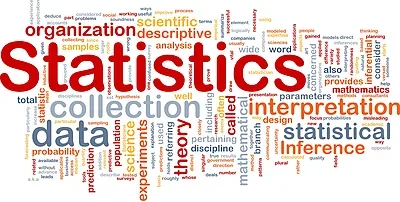Weekly Calendar:
Classes 1-5
Unit 5. Probability Distribution Functions and the Normal Distribution
|
Objectives |
|
· Recognize and understand discrete probability distribution functions, in general. · State the properties of a normal probability distribution. · Use the Empirical Rule to find probabilities related to normal distributions. · Use technology to determine probabilities associated with normal distributions and interpret the probabilities. · Find and interpret z-scores related to normal distributions. |
Reference: Chapters 4 and 6 of Introductory Statistics- OpenStax
Section 4.1. Probability Distribution Function (PDF) for a Discrete Random Variable
Section 6.1. The Standard Normal Distribution
Section 6.2. Using the Normal Distribution
Classes 6-9
Unit 6. The Central Limit Theorem
|
Objectives |
|
· Apply and interpret the central limit theorem for sample proportions. · Apply and interpret the central limit theorem for sample means. |
Reference: Chapter 7 of Introductory Statistics- OpenStax
Section 7.1. The Central Limit Theorem for Sample Means
Section 7.3. Using the Central Limit Theorem
Reference: See Attachment
Section 7.4 – Population and Sample Proportion
Classes 10-21
Unit 7. Confidence Intervals
|
Objectives |
|
· Find, interpret and use confidence intervals for a single population mean. · Find, interpret and use confidence intervals for a single population proportion. · Discriminate between problems applying the normal and the Student’s t distributions. · Calculate the sample size required to estimate a population mean and a population proportion given a desired confidence level and margin of error. · Use confidence intervals to compare two population means. · Use confidence intervals to compare two population proportions. |
Reference: Chapter 8 of Introductory Statistics- OpenStax
Section 8.1. A Single Population Mean using the Normal Distribution
Section 8.2. A Single Population Mean using the Student t Distribution
Section 8.3. A Population Proportion
Reference: OpenIntro Statistics
5.3.1 Confidence interval for a difference of means
6.2.2 Confidence intervals for p1-p2
Classes 22-30
Unit 8. Hypothesis Testing With One Sample
|
Objectives |
|
· Conduct and interpret hypothesis tests for a single population mean, unknown. · Conduct and interpret hypothesis tests for a single population proportion. · Understand the meaning of a p-value and how it is used. · Understand the meaning of significance level and how it is used. · Differentiate between Type I and Type II Errors. |
Reference: Chapter 8 of Introductory Statistics- OpenStax
Section 9.1. Null and Alternative Hypotheses
Section 9.2. Outcomes and the Type I and Type II Errors
Section 9.3. Distribution Needed for Hypothesis Testing
Section 9.4. Rare Events, the Sample, Decision and Conclusion
Section 9.5. Additional Information and Full Hypothesis Test
Classes 31-36
Unit 9. Hypothesis Testing With Two Samples
|
Objectives |
|
· Classify hypothesis tests by type. · Conduct and interpret hypothesis tests for two population means, unknown. · Conduct and interpret hypothesis tests for two population proportions. |
Reference: Chapter 9 of Introductory Statistics- OpenStax
Section 10.1. Two Population Means with Unknown Standard Deviations
Section 10.3. Comparing Two Independent Population Proportions
Comments have been turned off for this Page (see Home for information on Comments).
Edit/Delete this Page from Dashboard > Pages



